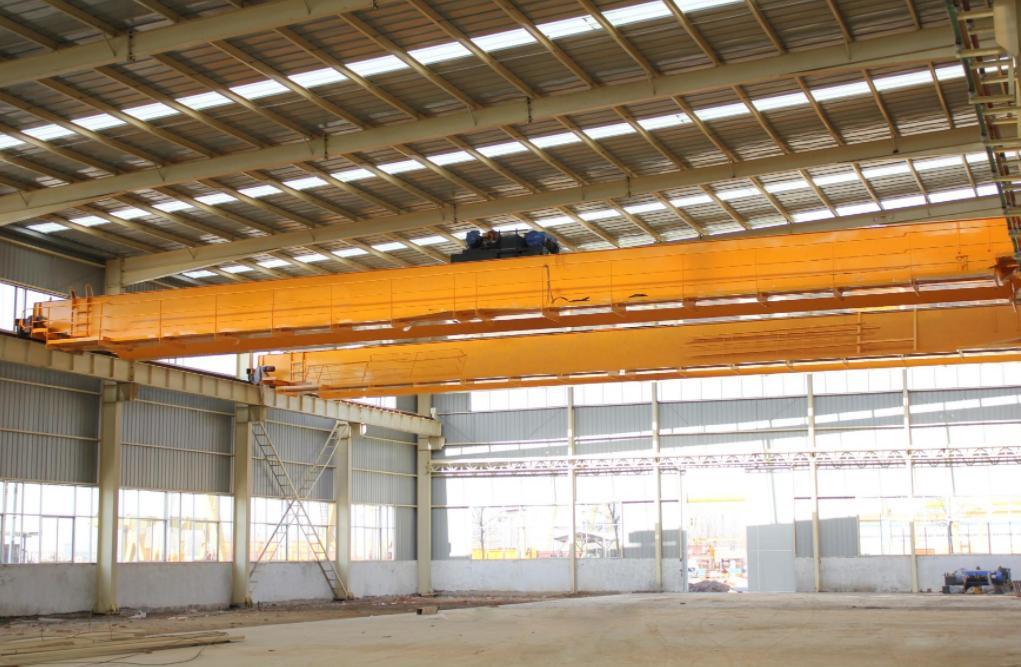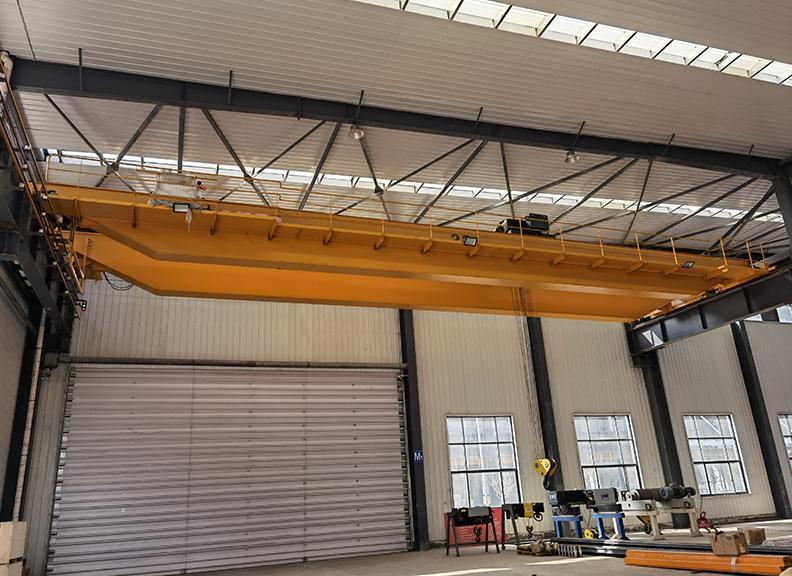In industrial environments where flammable gases, dust, or vapors are present, ensuring the safety of equipment becomes a critical consideration. Among the essential equipment in such settings, overhead cranes are indispensable for transporting heavy loads, materials, and components. However, the risk of explosions in these environments requires specialized crane design to prevent any potential ignition sources that could lead to catastrophic accidents. This article explores the key aspects of designing overhead cranes for explosion-proof environments, covering the safety standards, design considerations, and best practices that help minimize the risk of explosions while maintaining operational efficiency.

Understanding Explosion-Proof Environments
Explosion-proof environments are defined as areas where the presence of flammable gases, vapors, or dust may create a potentially hazardous atmosphere. Such environments include:
Chemical plants: Areas where volatile chemicals are manufactured or processed.
Oil refineries: Locations where petroleum products are refined and processed.
Gas stations and storage facilities: Areas with the presence of fuel gases.
Grain silos and milling facilities: Areas with combustible dust from grains, flour, or other particulate materials.
In these environments, even a small spark or heat from an electrical component can ignite flammable substances, leading to dangerous explosions or fires. Consequently, the design and operation of overhead cranes in these areas must comply with strict safety standards to prevent such incidents.
Explosion-Proof Standards and Regulations
The design of overhead cranes for hazardous environments is governed by several international and local safety standards. These regulations are crucial in guiding manufacturers to produce explosion proof cranes that can withstand the unique challenges posed by explosive atmospheres. The primary standards include:
IECEx and ATEX Standards:
The IECEx (International Electrotechnical Commission Explosive Atmospheres) and ATEX (Atmosphères Explosibles) certification systems are international standards for equipment used in explosive atmospheres. These regulations outline the classification of hazardous zones (classified into Zone 0, Zone 1, Zone 2 for gases and Zone 20, Zone 21, Zone 22 for dust) and require that equipment used in these zones must be designed, manufactured, and certified as explosion-proof.
NFPA Standards:
The National Fire Protection Association (NFPA) provides guidelines for industrial and commercial safety. NFPA 70 (National Electrical Code) and NFPA 70E (Standard for Electrical Safety in the Workplace) are key standards when designing overhead cranes in hazardous environments. These guidelines ensure that electrical components are suitably protected against explosion risks.
OSHA Regulations:
The Occupational Safety and Health Administration (OSHA) enforces workplace safety standards, including for hazardous environments. In the U.S., OSHA references NFPA and IECEx/ATEX standards, requiring employers to use explosion-proof equipment when operating in volatile atmospheres.

Key Design Considerations for Explosion-Proof Overhead Cranes
Designing an overhead crane for an explosion-proof environment requires careful consideration of several key factors. These include the crane's electrical system, materials used in its construction, mechanical components, and maintenance practices. Below are the critical aspects to consider:
1. Explosion-Proof Electrical Systems
The electrical system of an overhead crane for sale is often the most significant potential source of ignition in explosive environments. Therefore, all electrical components used in explosion-proof cranes must be designed to prevent sparks, electrical arcs, or overheating, which could ignite the surrounding atmosphere.
Explosion-Proof Motors: Motors used in overhead cranes must be housed in specially designed enclosures that prevent any ignition sparks from escaping. These enclosures are typically made of heavy-duty cast iron or steel and are sealed to ensure that no dust or gases can infiltrate the motor.
Intrinsically Safe Wiring and Controls: All wiring and control panels should meet the requirements for being intrinsically safe, meaning they are designed to operate below the temperature and energy levels that could ignite a flammable atmosphere. Additionally, wiring should be installed using explosion-proof conduits to prevent sparks from escaping.
Temperature Control: All electrical components must be thermally protected to ensure they do not overheat and become ignition sources. This may involve the use of temperature sensors, cooling systems, or explosion-proof venting.
2. Material Selection for Structural Integrity
The materials used in the construction of an explosion-proof overhead crane must be resistant to corrosion, wear, and impact while maintaining their structural integrity in the presence of hazardous substances. Common materials for explosion-proof cranes include:
Stainless Steel and Special Coatings: Stainless steel is often used for structural components as it offers excellent resistance to corrosion and can withstand harsh chemicals. Additionally, specialized coatings such as epoxy or zinc can be applied to prevent rusting and damage caused by flammable substances in the environment.
Non-Sparking Components: Cranes in explosion-proof environments should be built with non-sparking materials, especially for components like hooks, chains, and drums. These materials reduce the risk of igniting explosive dust or gases during operation.
3. Safe Operating Mechanisms
Overhead cranes in hazardous environments must feature safe operational mechanisms that do not pose a risk to personnel or cause accidental ignitions.
Explosion-Proof Brake Systems: Brakes used in the crane must be designed to operate safely in explosive environments. Explosion-proof brakes should be fitted to the crane to prevent overheating, which could lead to sparks and ignition.
Overload Protection: Overloading the crane in hazardous environments could cause strain on the equipment, leading to mechanical failures and creating potential ignition sources. Incorporating overload sensors, safety limiters, and automated shutdown systems can prevent such incidents.
Remote Control Operation: To reduce the risk of human error and exposure to hazardous zones, overhead cranes are often operated remotely. This minimizes the chances of sparks being generated from human activity or electrical contact in dangerous areas.
4. Explosion-Proof Enclosures for Control Systems
The control panels of an explosion-proof crane must be housed in explosion-proof enclosures to protect the electrical systems from hazardous environments. These enclosures are typically sealed and reinforced to prevent any sparks from escaping. Furthermore, the control systems should be designed to function without generating excessive heat or causing electrical arcs.
Automated Shutdown Features: In cases where there is a malfunction in the control system, the crane should automatically shut down to prevent any potential ignition sources. This is particularly important for maintaining safety in explosive environments.
5. Regular Maintenance and Inspections
In explosion-proof environments, overhead cranes must be regularly inspected and maintained to ensure their safe operation. Specialized maintenance procedures should be established to monitor and maintain the explosion-proof features of the crane, including:
Regular Inspections: Inspecting electrical systems, wiring, motors, and mechanical components ensures they are functioning as expected. Any signs of wear or damage should be addressed immediately.
Scheduled Replacements: Some components, such as seals and insulation materials, may degrade over time and require replacement. Scheduled maintenance ensures these components are replaced before they pose a safety hazard.
Cleaning Procedures: In environments with dust or other hazardous particles, cleaning procedures must be implemented to prevent buildup in the crane’s components. Dust accumulation could become an ignition source if not properly managed.
Best Practices for Safe Operation
Alongside proper design and construction, safe operation practices are essential to minimizing risks in explosive environments:
Operator Training: Operators should be thoroughly trained on how to operate cranes in hazardous areas, focusing on preventing sparks and avoiding overloads. They should also be aware of the proper emergency shutdown procedures.
Hazardous Zone Markings: Clearly marking hazardous zones around the crane's operational area helps ensure that workers maintain a safe distance from the crane's moving parts.
Proper Grounding: Proper grounding of all electrical components reduces the risk of electrostatic discharges, which could cause sparks and ignite flammable substances.
Conclusion
Designing an overhead crane for explosion-proof environments requires a careful balance of advanced engineering, materials science, and operational safety practices. Adhering to industry standards, such as IECEx, ATEX, and NFPA regulations, ensures that cranes can operate safely in environments with hazardous gases, vapors, or dust. By focusing on explosion-proof electrical systems, non-sparking materials, safe operating mechanisms, and ongoing maintenance, manufacturers can deliver overhead cranes that not only meet stringent safety requirements but also maintain operational efficiency. With proper design and safety measures in place, overhead cranes can continue to be an invaluable tool for industries working in explosion-prone environments.